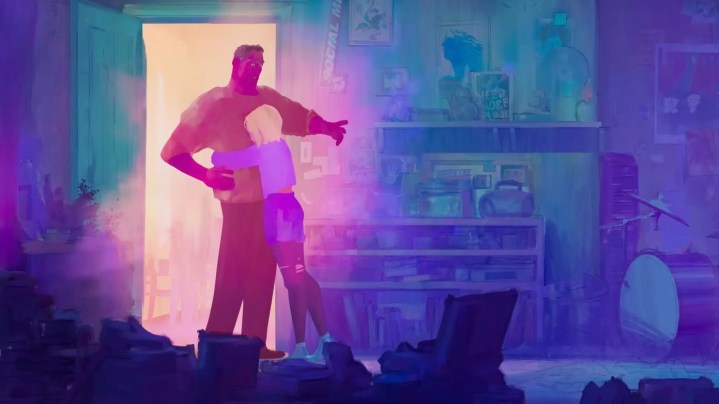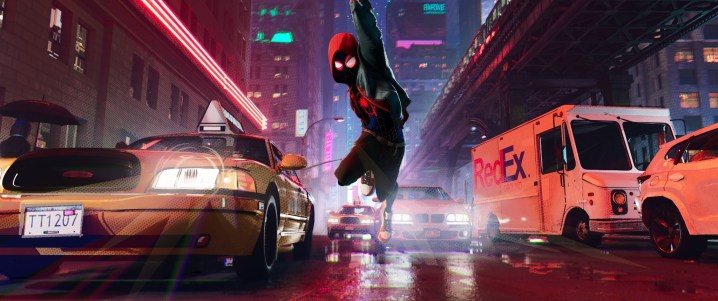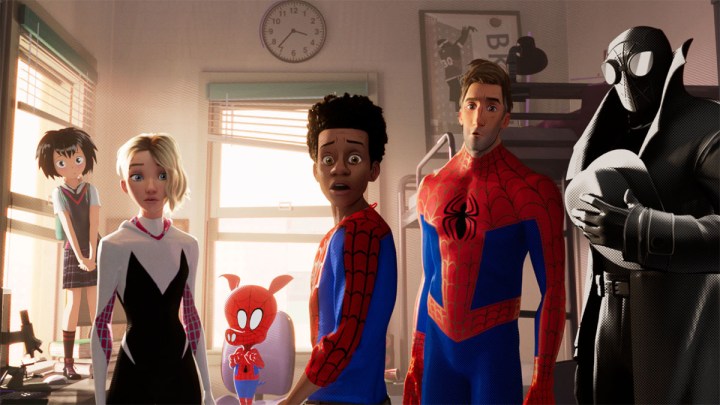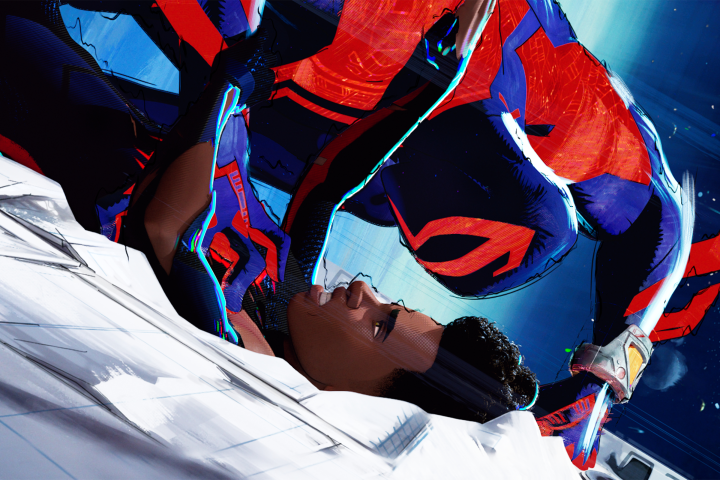Spider-Man: Across the Spider-Verse had a tall task ahead of it. The new film from Sony Pictures had to follow up on one of the greatest superhero movies of all time in Spider-Man: Into the Spider-Verse. While Across pushes the boundaries of cinema even further than its predecessor, is that enough to top the remarkable achievement of the original?
Both movies possess unique and groundbreaking visuals

Spider-Man: Across the Spider-Verse once again follows Miles Morales (Shameik Moore), a teenager in New York City who likes to sling webs in his free time. Miles has been his universe’s one and only Spider-Man for over a year, and he’s honed his Spidey skills significantly more than when audiences last saw him in 2018. Now, Miles is thrust into the reality of Spider-Man; how can he save everyone without losing himself? When his multiversal friend and fellow Spider-person Gwen Stacy returns to Miles’ Earth on a mission, the entire multiverse is at risk of deteriorating. And it’s all because of Miles.
What Across the Spider-Verse is able to accomplish as far as its visual style is something that has to be seen to be believed. The film’s starting 60 minutes might just be one of the greatest hours of animation ever seen; it weaves a multiverse of grief and anxiety onto an intoxicating canvas, one in which not a single centimeter of the frame is wasted. The animation brims to the edge with character and color. It’s cliché to call every frame a painting, but it’s difficult to not just sit in awe at any moment.

Whereas Into the Spider-Verse was able to introduce and perfect a highly unique comic book-inspired visual style, Across is somehow able to one-up itself. Strokes of watercolor images change with each shot, comic accents burst onto the screen, and each character brings with them their own visual style. Into the Spider-Verse felt like an adventure into the limits of animation. Across the Spider-Verse bursts through those limitations, proving that the only real limit of animation is invention. Ambition is the name of the game, and Across the Spider-Verse is winning.
Together, the Spider-Verse movies have created something almost beyond conventional cinematic standards; it’s as if someone made a comic book move and evolve in real time. It’s pioneering something completely different.
Into The Spider-Verse’s origin story simply can’t be beat

Across the Spider-Verse is a marvel, that is until it starts worrying too much about being Marvel. Narratively, it’s difficult to say that the new movie is able to live up to its predecessor. One of the things that makes Into the Spider-Verse work is that it’s self-contained. It’s an origin story, yes, but an origin story that is exceptionally aware of itself. The film functions much like a character study of one young man trying to find his place in the world, resulting in an up-and-down story of self-worth, love, and perseverance.
Each character is fully fleshed out and developed, from Jake Johnson’s down-on-his-luck Peter B. Parker to Hailee Steinfeld’s Gwen Stacy. There’s a reason why the What’s Up Danger sequence works so well; it’s the perfect blend of aesthetic and narrative. Due in large part to the fact that Across the Spider-Verse is only the first part of a two-part saga that will conclude with 2024’s Beyond the Spider-Verse, the new film simply isn’t able to match Into the Spider-Verse‘s narrative heart.

The latter half of Across the Spider-Verse is largely dumps of exposition as it lays the groundwork for an epic finale in Beyond the Spider-Verse. Cameos abound in generally uninspired fashion, and the far-too minimal use of characters like Peter B. Parker and Miguel O’Hara results in what feels like an hour of set up. The movie bounces its focus far too often, thwipping between the Spot’s evil plan to Miles and Gwen’s own personal battles to O’Hara’s quest to protect the multiverse.
Is Across the Spider-Verse too ambitious for its own good?

Across the Spider-Verse is much bigger than its predecessor, but bigger doesn’t always mean better. In some ways, the ambitions of the new film allow it to push the envelope of filmmaking. In other ways, its ambition is its downfall. Due to its size, Across has to spend so much time setting itself up. Really, it’s a logistical problem. It has to explain the stakes of every plot point, it has to introduce every new significant character (and there’s a lot of them), and it has to get viewers invested in what is to come.
While the ending works exceptionally well as a comic book trying to get readers to tune into the next adventure of their friendly neighborhood Spider-Man, it hardly functions as a satisfying wrap-up to a film. The conclusion makes it difficult to judge the film as a singular object; it feels inherently incomplete.
Of course, not every ending needs to answer every single question and tie every plot point with a tidy bow. However, Across the Spider-Verse largely feels like it’s teeing up. It’s a tee with specks of gold and diamond in its construction, but it’s a tee nonetheless. The question is if Beyond the Spider-Verse can drive it home. With a setup like Across the Spider-Verse, there is quite literally no limit as to how great Beyond can be.
Which Spider-Verse movie is better?

So, is Across the Spider-Verse better than Into the Spider-Verse? It’s a difficult question, as both films are such unique accomplishments that are full of heart and ambition in their own ways. In my opinion, Across the Spider-Verse, despite being stunning and awe-inducing at moments, doesn’t match the singular perfection that is Into the Spider-Verse. That doesn’t mean Across is “bad” or “not worth watching;” that’s just untrue. But Into the Spider-Verse caught lightning in a bottle, and I’m not convinced Across the Spider-Verse was able to catch that same lightning.
My prediction is that, if Beyond the Spider-Verse knocks it out of the park, Across the Spider-Verse will be remembered as caught in limbo between the first and third movies. It’s breathtaking in its own way and sets up so much, but it also functions heavily as a logistical movie, one that has to clear its throat and explain itself so as to set up the future. In contrast, Into the Spider-Verse is, to put it simply, untouchable, one that stands on its own, not an incomplete part of a fractured story. It remains one of the best animated movies of all time, and, according to James Gunn, the best comic book movie ever. Who am I to argue with that?
Spider-Man: Across the Spider-Verse is now playing in theaters nationwide. Into the Spider-Verse can be rented or purchased at a variety of digital vendors, including Prime Video and Apple TV.



